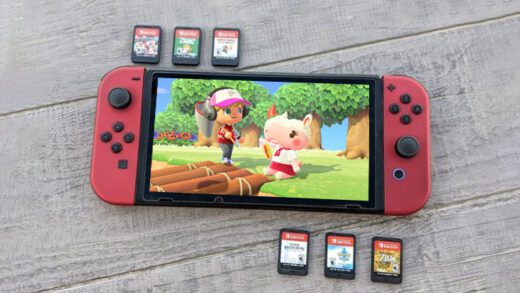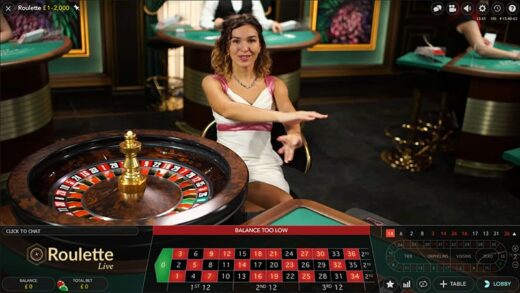In the realm of puzzles, Sudoku emerges as a Japanese gem, seamlessly blending logic and simplicity within its 9×9 grid. Whether you’re delving into this captivating game for the first time or are a seasoned enthusiast, this expert guide comprehensively introduces how to play Sudoku. It swiftly provides essential skills, guiding you through the intricacies of the puzzle. Join me on this journey as we unravel the Sudoku puzzle, turning it into a gratifying and intellectually stimulating pursuit.
What is Sudoku?
Sudoku is a fun puzzle game you can play alone. It’s been around for a long time! In Sudoku, you use your brain to find patterns and put the right numbers in the boxes on a board.
The more boxes you fill correctly, the easier the whole game becomes. Sudoku is good for everyone – whether you’re just starting or you’ve been playing for a while. You can choose easy, medium, or hard puzzles based on what feels right for you.
For beginners, start with easy puzzles. Learn how the numbers fit in the grid and practice using your brain. If you’re getting better, try medium puzzles with more challenges. And if you’re really good, take on the hard puzzles for a brainy adventure.
Remember, Sudoku is about having fun while you think. Grab a pencil and enjoy figuring out the patterns.
Objective
Sudoku’s primary goal is to correctly fill in all the empty boxes on the grid.
Number of Players
Sudoku is a game you can play all by yourself.
What You Need
You’ll need a printed Sudoku puzzle and a pencil. Alternatively, you can play Sudoku online for convenience.
Age Considerations
The regular 9×9 Sudoku grid is good for people eight years old and older. If you’re younger, you can make it easier by using a 4×4 grid with four small blocks.
Game Duration
Playing the regular 9×9 Sudoku usually takes about twenty minutes. But remember, it might take a bit longer or shorter based on how tricky the puzzle is and how good you are at it.
Skills
Smart Thinking
Sudoku is a game that makes you think logically. Even though there are numbers, you don’t need to be a math expert. The numbers are like special symbols on the board. The game is more about using your brain to find patterns.
Keep Trying
Playing Sudoku might take some time, but every puzzle can be solved. It’s okay to take your time and not give up. You can keep trying until you succeed.
Getting Better with Numbers
You don’t need to do math like adding or subtracting but playing Sudoku with numbers 1-9 can help you recognize and understand numbers more easily. It’s like a fun way to become friends with numbers.
Why Sudoku is Fun for Families and Kids
Sudoku is like a cool game that helps you think better. It’s not too hard, but just a bit challenging, making it super fun to solve puzzles. When the puzzles match how good you are at the game, it feels really good to finish them. So, Sudoku is not just a game – it’s a fun way to get better at thinking.
How To Play Sudoku
Get Ready for Sudoku Fun
To play Sudoku, all you need is a Sudoku puzzle and a pencil (you can also play online if you want). It’s smart to start with easy puzzles and move to harder ones as you get better. If you try a puzzle that’s too hard at first, it might feel tricky.
Understand How the Game Board Works
Before you start playing, let’s talk about how the game board looks.
In the regular version, the game board is like a big square divided into smaller boxes. Here’s what it has:
- Nine columns
- Nine rows
- 81 squares, some with numbers and some without
- Nine special 3×3 boxes, each marked with a bold line
Understanding the Basics and Aiming for Success
In Sudoku, the main goal is to correctly fill in all the cells. Follow these simple rules:
- Each row must have the numbers 1 through 9, once each.
- Every column must contain the numbers 1 through 9, once each.
- Each of the nine smaller boxes must also have the numbers 1 through 9 once each.
Remember, every Sudoku puzzle can be solved using logic – no guessing is needed!
Finding Initial Clues to Start Solving Cells
To begin playing, look for the easiest clues in the puzzle. Start with simple strategies like “scanning” and “counting,” and you’ll be on your way to solving Sudoku puzzles like a pro.
Completing the Puzzle
As you correctly fill in more cells, chances to solve other parts of the puzzle open up. Sometimes, the basic strategies might not be enough, and that’s okay. You can move on to more advanced methods like intersecting lines, candidates, completed patterns, and matching pairs. We’ll explain these advanced strategies in more detail below.
Winning at Sudoku
To win at Sudoku, you need to put the right numbers in all 81 cells. Each row, column, and block should have the numbers 1-9 without repeating. Remember, Sudoku is made to be solvable using your thinking skills – no need for guessing.
Sudoku Rules Made Simple
Playing Sudoku is easy when you know the basic rules. Here they are:
- Each row needs the numbers 1 through 9 just once.
- Every column must have the numbers 1 through 9 only once.
- Each of the nine blocks (3×3 boxes) should have the numbers 1 through 9 only once.
Remember:
- Every Sudoku puzzle has just one solution.
- You can write only one number in each square, but feel free to add smaller notes if it helps you. Enjoy playing.
Winning Strategies For Sudoku
When you’re solving a Sudoku puzzle, you usually do two things. You either put numbers into a cell or you figure out which numbers can’t go into a cell.
2 Easy Tips for Sudoku Beginners: If you’re just starting with Sudoku, here are two simple tricks to help you get going: scanning and counting.
Scanning Technique
Counting Technique
Solving Sudoku Challenges: 4 Next-Level Tips
When you’re starting with Sudoku, using techniques like scanning and counting is a great way to begin. But as you try more challenging puzzles, you might get stuck. Don’t worry! Here are some extra tips to help you when things get tricky. Keep having fun with Sudoku.
“Intersecting Lines” Method
Apply the “Candidates” Technique and the “Snyder” Pencil Marking Approach.
Technique for Recognizing “Completed Patterns”
Technique for Identifying “Matching Pairs” (also known as naked pair, pair, twins)
Variety in Sudoku
Symbols:
Sudoku usually uses numbers 1-9 as symbols, but these numbers are like special signs and not for math. You can be creative and use different symbols, objects, or animals. Just make sure you have nine unique symbols, and each one shows up exactly once in every column, row, and block. Have fun trying out new things in your Sudoku game.
Sudoku Tips for Kids: If you’re a kid playing Sudoku, here’s a helpful idea:
A: Begin with easy puzzles. Try ones with 3×1 blocks, 2×2 blocks, or 4×1 blocks. It makes the game more fun and not too hard. Have a great time playing Sudoku.
B: Move on to a 4×4 Grid with 4 Blocks. Following that, try tackling puzzles on a 4×4 grid with four blocks. It’s a simpler challenge that introduces similar game mechanics, laying the groundwork for playing the traditional 9×9 version.
Sudoku Terms Made Simple
- Grid: The whole playing area, usually with nine rows and nine columns, making 81 cells.
- Cell: Each little square in the grid adds up to 81 in total.
- Block: Nine special groups of 3×3 cells, outlined with bold borders. Also called “box” or “region.”
- Rank: Rows that go across the grid, with top, middle, and bottom ranks.
- Stack: Columns that go up and down the grid, with left, centre, and right stacks.
Recommendation
How To Play Bunco: A Step By Step Guide
How To Play Mash: Mansion Apartment Shack House
How To Play Jenga: Rules, Strategy & More
How To Play Crazy 8: Rules, Tips, Variations & More
How To Win Mancala: Easy Guide To Master Mancala
How To Play Garbage Card Game AKA Trash Card Game
FAQs
Q: What is the trick to solve Sudoku?
A: A primary approach for solving Sudoku puzzles is to methodically list all potential entries in each empty cell, ensuring compatibility with the One Rule. When a cell is narrowed down to only one feasible entry, it transforms into a “forced” choice, and you can proceed to fill it in confidently.
Q: Is Sudoku good for the brain?
A: Playing Sudoku effectively keeps your brain active and reduces the risk of Alzheimer’s, a common cause of dementia impacting cognitive and behavioural abilities. This engaging game stimulates your mind by focusing on logical thinking processes while immersing yourself in puzzle-solving, ultimately contributing to the enhancement of your numerical skills.
Q: Can I solve Sudoku without guessing?
A: Sudoku, a puzzle driven by logic, doesn’t require arithmetic or guessing. The main goal in solving these puzzles is to identify cells (the small squares) where you can be certain that only one value is the correct placement.
Q: What is the 3-number Rule in Sudoku?
A: The concept of “Hidden triples” is relevant when three cells within a row, column, or 3×3 block share the same set of three Notes. These particular cells may also have other candidates present, which can be excluded from consideration.



